This Fast-paced World Needs to Slow Down
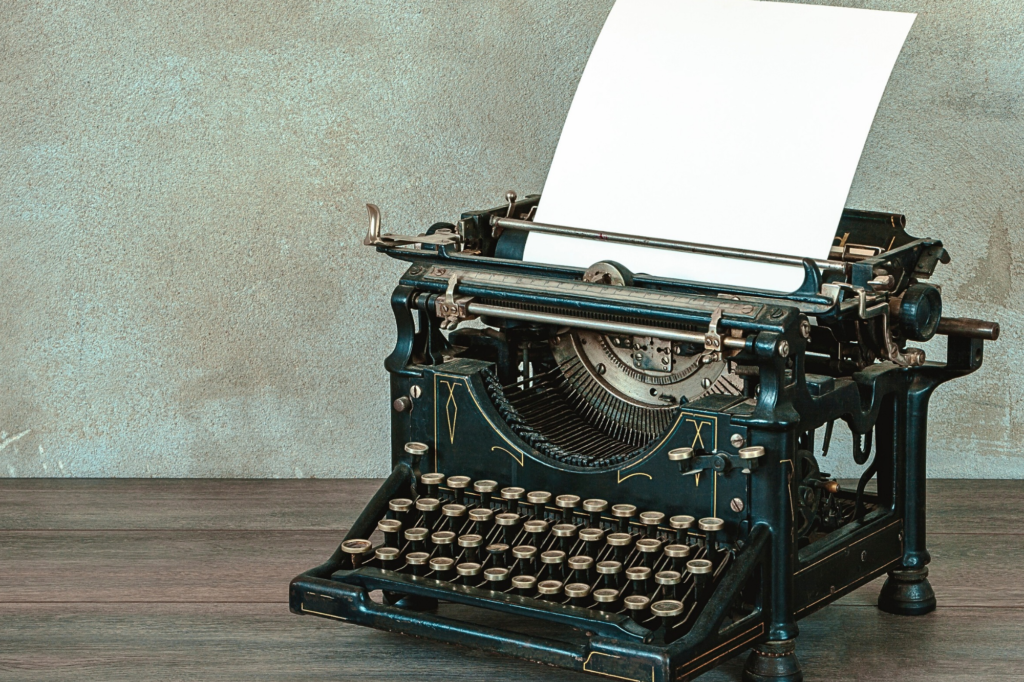
The gentle clack-clack-ding! isn’t just a sound; it’s the rhythm of a quiet revolution. We’re all so glued to screens that the sight of a vintage typewriter seems like a delightful anomaly, yet they’re truly soaring back into our culture. Forget dusty relics, these analog beauties are the new focus tool for a generation craving authenticity and a much-needed break from the digital noise.
1. Distraction-Free Writing
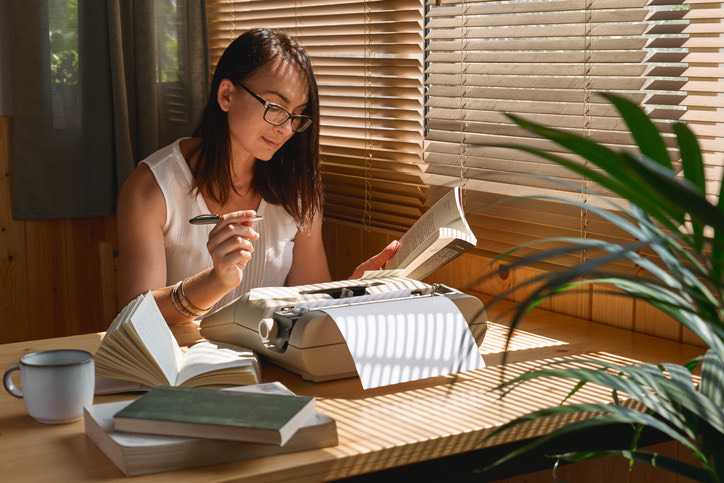
You know that feeling when you’re finally in the zone, then a new email pops up and steals your focus? Well, that’s exactly what a typewriter fixes. It’s almost like a forced mindfulness practice for your fingers, stripping the act of writing down to its beautiful, essential core. Think about it: no tabs to open, no notifications to silence, no sneaky desire to just check TikTok for a second. Experts in productivity often suggest minimizing screen time to deepen concentration, and for a generation drowning in digital overload, this simple machine is the perfect life raft. You sit down, you put paper in, and you write. That singular purpose is incredibly freeing and, honestly, a massive boost to getting real work done without the guilt of multitasking. It’s a kind of productivity that feels slow, deliberate, and deeply satisfying.
2. The Click-Clack Satisfaction
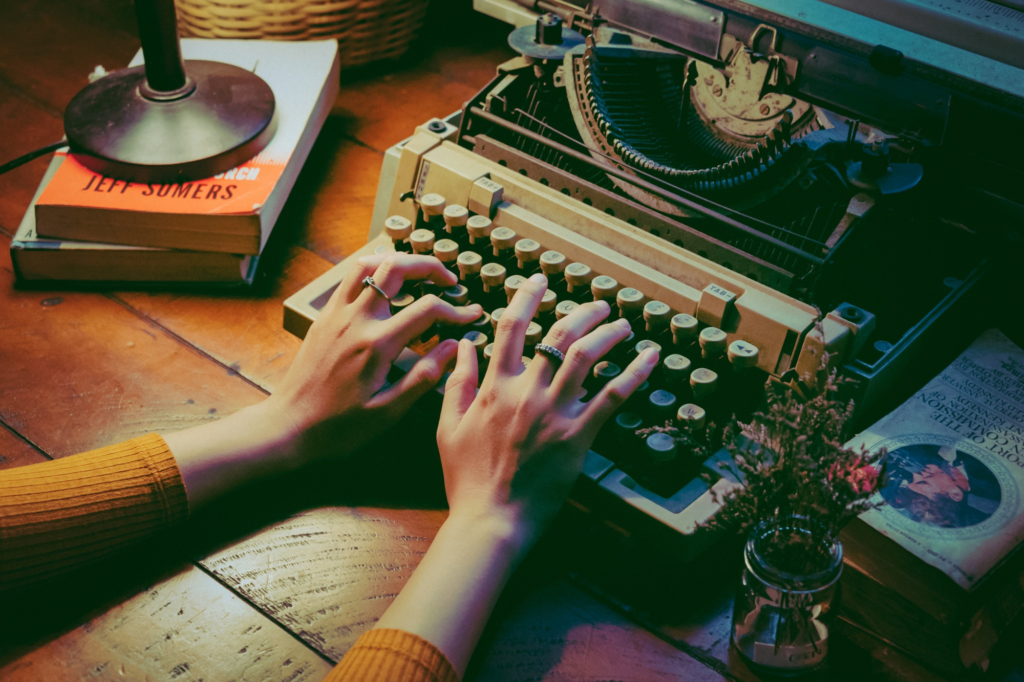
There’s something uniquely addictive about the sound and feel of a typewriter key hitting the platen. When you type on a modern keyboard, it’s all silent taps on a smooth surface, but a typewriter demands a physical commitment, a proper, intentional strike. This tactile feedback, that glorious sound of the carriage return, isn’t just noise; it’s an auditory confirmation of your progress. For young writers accustomed to the frictionless, silent glide of a screen, this satisfying resistance is almost a sensory experience in itself, often described as an organic kind of ASMR. It turns a chore into a ritual, where the very machine is an active partner in your creative process, making every word feel weighty, intentional, and real in a way a word processor never could. It’s the sheer physicality that connects you to the work.
3. Slower Creativity, On Purpose
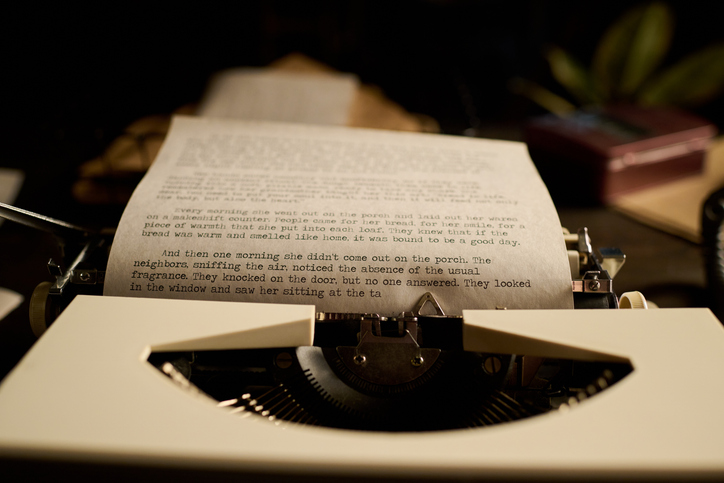
We live in a world that shouts, “Faster! Faster! Publish instantly!” and the typewriter is the calming, gentle whisper that says, “Slow down.” It introduces friction into the creative process, and that’s actually its genius. There’s no easy ‘delete’ button; a mistake means reaching for the correction fluid or tape, which naturally makes you pause and think before you commit a letter to the page. This enforced patience, this mandatory deliberation, is exactly what a lot of young creators are craving. It shifts the focus from instant output to thoughtful crafting. This deliberate pace, according to some experts in creative flow, helps deepen engagement with the material, making the process itself feel less like a frantic race and more like a cherished accomplishment, even when you’re just on the first draft.
4. Nostalgia They Didn’t Live

It’s funny how the very things Gen Z never used are suddenly the epitome of cool. They aren’t nostalgic for typewriters in the same way their parents might be; for them, the machine is a brand-new, tactile mystery, a portal to a bygone era they only know from movies. Much like the revival of vinyl records and film photography, the typewriter is a piece of analog novelty in a world where everything else is digital and predictable. This “retro-novelty” appeals deeply to their desire for authenticity and unique aesthetics. It’s not a comeback fueled by memory, but by curiosity and the thrill of engaging with a mechanical, tangible object that stands in stark contrast to their screen-saturated reality, offering a kind of historical connection that feels refreshing and personal.
5. Aesthetic Appeal
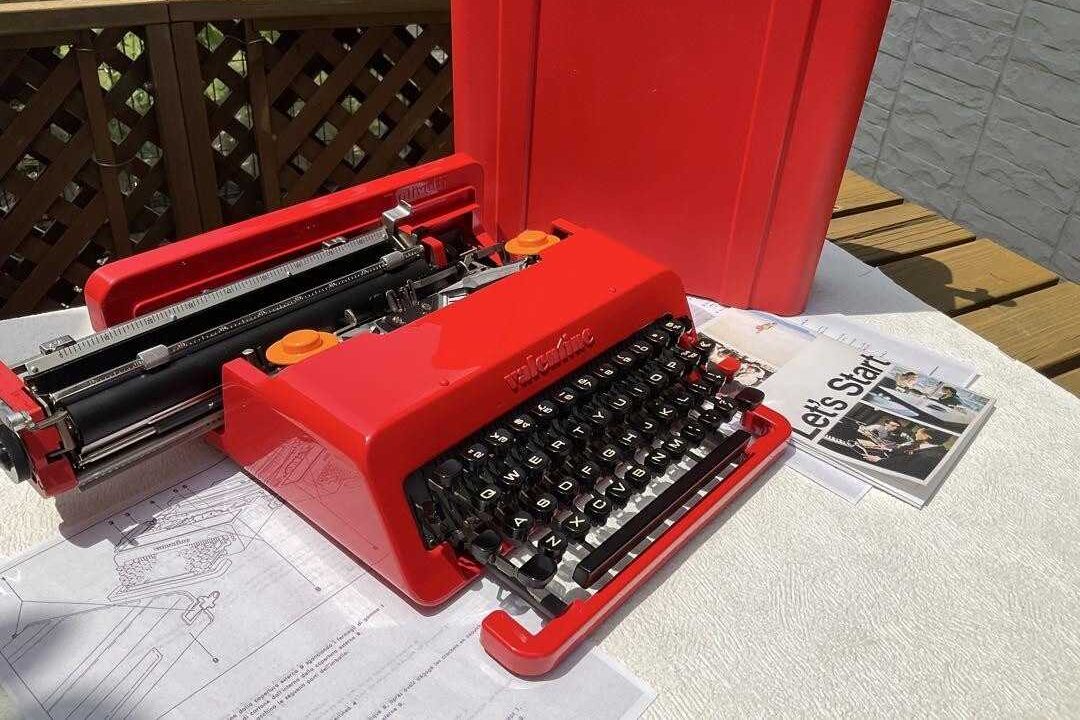
Let’s be honest: typewriters are gorgeous. They’ve transcended their function to become bona fide pieces of interior design. Whether it’s a sleek, mid-century Olivetti or a stately, black Royal, they instantly elevate a space, making a bold statement about the owner’s creativity and appreciation for classic design. You see them styled everywhere on platforms like TikTok and Instagram, perched on a wooden desk next to a stack of vintage books or a record player, acting as a visual shorthand for an “analog authentic” lifestyle. It speaks to a conscious rejection of minimalist, sterile modernity. Even if they aren’t used every day, their presence signals an artistic soul, an appreciation for the mechanical arts, and a desire to surround oneself with objects that have history and real, palpable character.
6. Analog Therapy
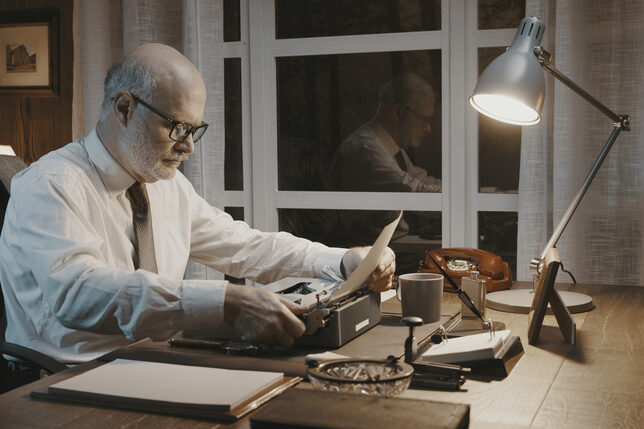
In our hyper-connected state, simply slowing down can feel revolutionary, and that’s where the typewriter steps in as a surprising wellness tool. Some mental health professionals have started noting the benefits of analog creation, suggesting that the physical act of typing on a non-digital machine can act as a form of mindfulness. The focus required to operate it, loading the paper, positioning the carriage, making each strike count, forces the mind into a present state, offering a genuine reprieve from the constant mental scrolling and noise of the digital world. This process, sometimes affectionately called “analog therapy,” allows the brain to engage with thoughts at a much slower, more intentional pace, which can significantly reduce feelings of anxiety and digital burnout.
7. The Repair Revival

The fact that historic typewriter repair shops aren’t just surviving but actually seeing a fresh wave of younger clientele is a wonderful sign of cultural change. When you use a typewriter, you’re engaging with a piece of durable, repairable technology, and this perfectly aligns with the sustainability values held by Gen Z. Choosing to restore and reuse a machine from the 1940s or 50s is a conscious rejection of the e-waste-producing cycle of “buy, break, replace.” When beloved institutions, like the one George Clooney championed in New York, are boosted by new interest, it shows a commitment to craftsmanship and longevity. It’s a hands-on, tangible way to live a greener, more sustainable creative life by valuing repair over disposable consumerism.
8. Offline Reliability
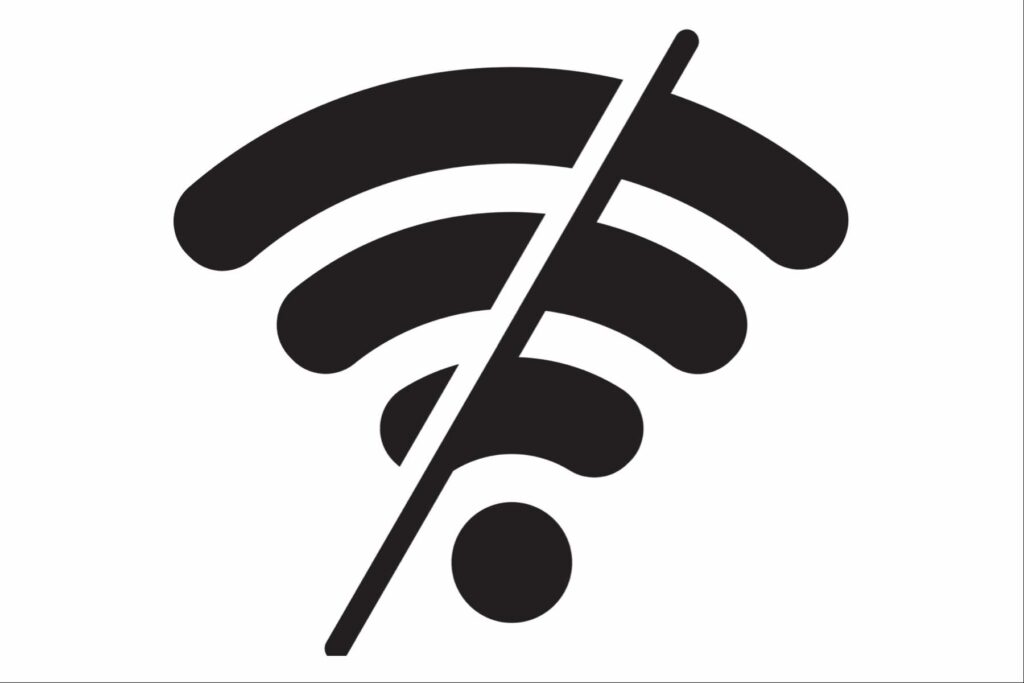
Perhaps the simplest but most profound appeal of the typewriter is its utter independence from the digital ecosystem. It doesn’t crash, it never needs a software update, and it definitely won’t ask you to reset your password. In a world where everything, from our banking to our creative portfolios, is precariously reliant on power, servers, and constant connectivity, the typewriter offers refreshing, ultimate reliability. For anyone who has lost a crucial document to a system crash or a cloud outage, the idea of a machine that simply works, every time, with nothing but human power and paper, is deeply comforting. The ultimate power-saving feature? No charger needed, ever. That simplicity is a powerful, compelling argument in an overly complex world.
9. Limited Editions & Collabs
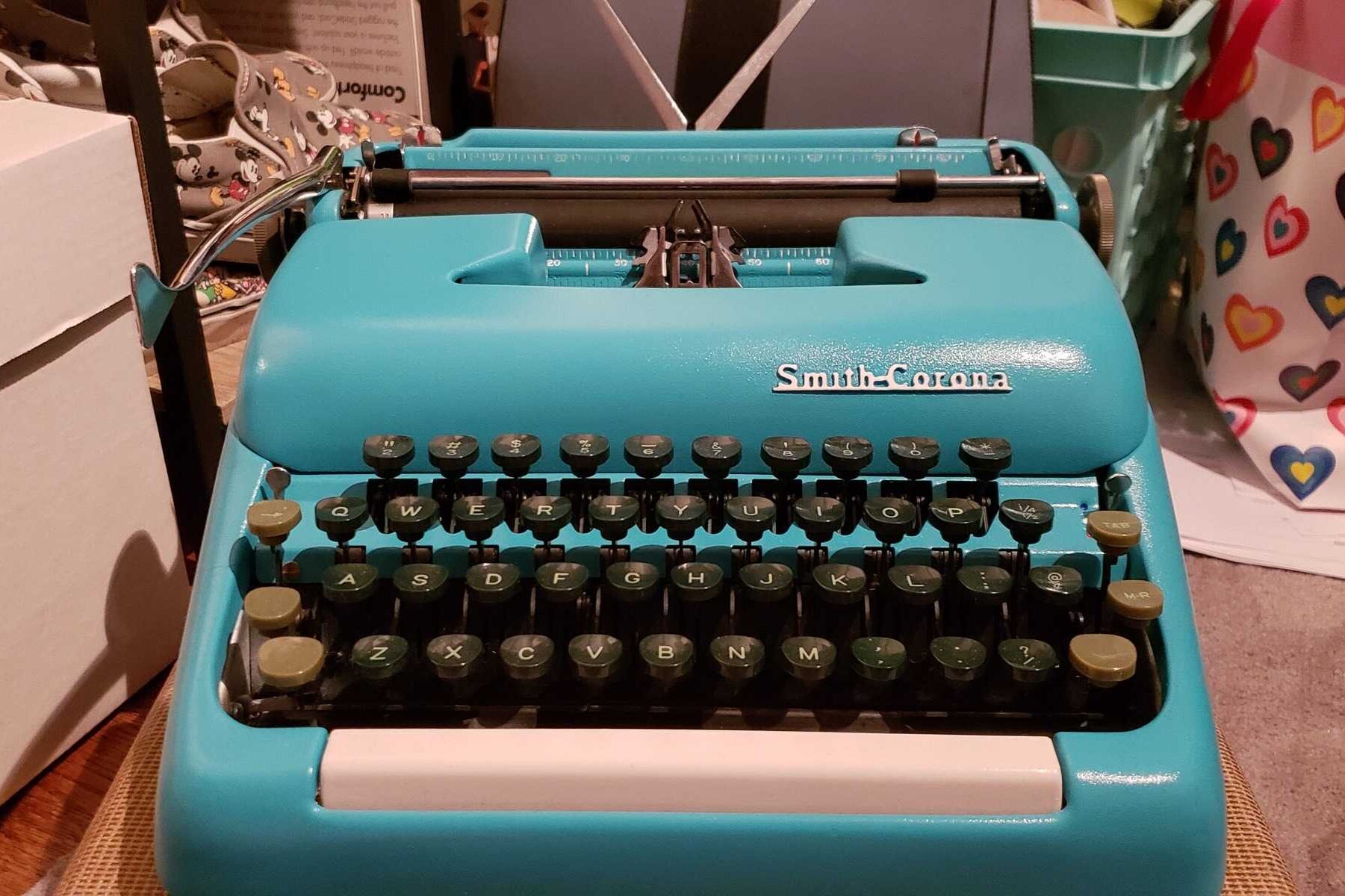
Just as sneakers, watches, and vinyl records create collector frenzy with limited drops, the typewriter world is tapping into the irresistible allure of exclusivity. Companies and individual refurbishers are creating gorgeous, custom-painted, and themed typewriters, from subtle designer collaborations to playful colors. These aren’t just functional machines; they are fashion pieces, collectible art objects that feed the younger generation’s desire for unique, statement-making items. Owning a perfectly restored, rare-color Smith-Corona or a one-of-a-kind vintage model gives the owner an immediate sense of individuality and analog street cred, making the machine a cool, collectible asset in the same way a rare variant of vinyl is.
10. The Soundtrack of Creativity

The distinct, rhythmic clack of typewriter keys has become a strangely popular sensation on its own, evolving into a form of aural comfort. On platforms like TikTok, the sound is often captured and amplified, serving as a soothing, analog white noise for studying, focusing, or simply creating a specific “vibe.” This isn’t just about the machine itself, but about the atmosphere it creates. For Gen Z, sound is a massive part of a creative aesthetic, and the predictable, mechanical rhythm of the typing process offers a natural, non-digital drone that helps to block out other distractions. It’s a form of sonic mindfulness, turning the machine’s operation into a creative soundtrack for modern, digital brains.
11. Escape from Burnout
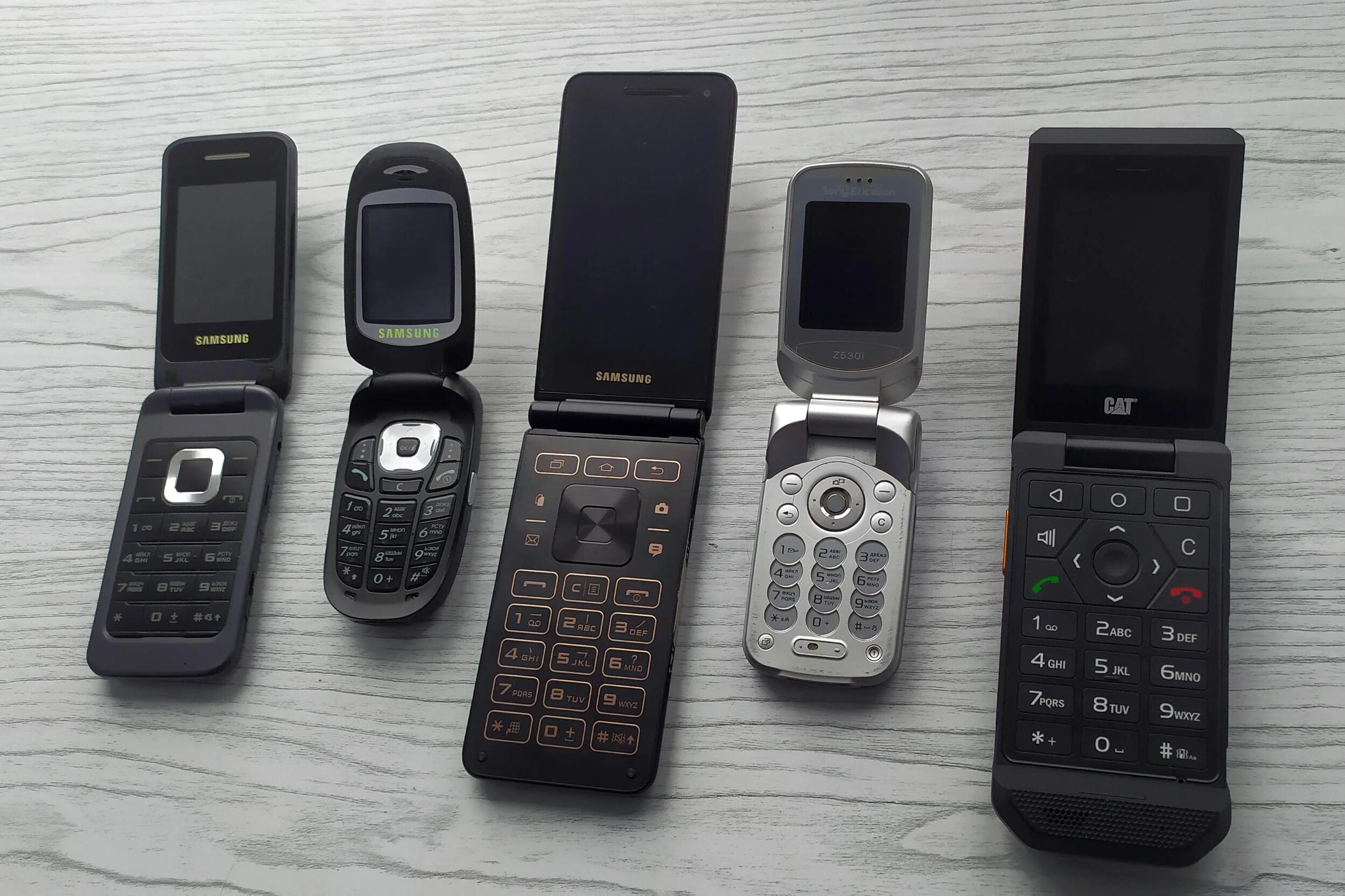
The concept of a “flip phone summer” or a mass pushback against the constant pressure of digital life is a powerful indicator of Gen Z’s struggle with burnout. The typewriter perfectly fits into this self-care ethos. It’s slow, it’s unplugged, and it demands intentionality, serving as a tangible tool for mental decompression. In this current climate, using a typewriter is less about a passing retro trend and more about a deliberate, mindful lifestyle choice. It’s a way to reclaim time and focus, framing the process of creation not as another task to be rushed through but as a restorative, calming activity that promotes well-being and a healthier, more balanced approach to output.
12. Typewriter Meet-Ups & Workshops
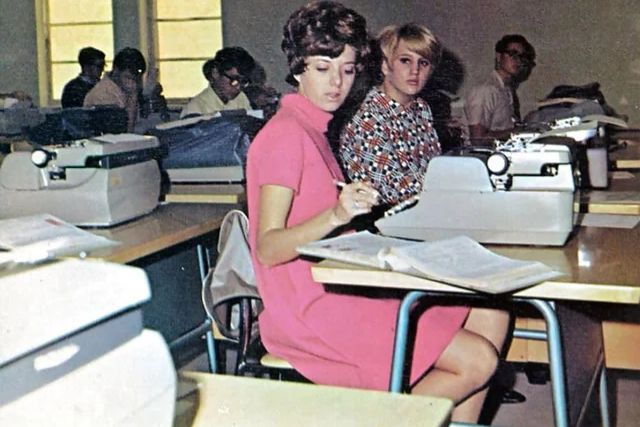
A huge part of the typewriter revival is the community that’s forming around it. Across cities, people are gathering for “type-ins,” where they bring their machines to a public space to write together, or attending workshops to learn maintenance and repair skills. For those who grew up in the 60s-90s, this type of gathering is similar to the typing classes we had back then. But, for Gen Z, this taps into the same desire for physical, shared experiences that drives the popularity of vinyl record swaps or analog photography clubs. Educators are also beginning to experiment with typewriters in the classroom again, noting a surprising benefit to student engagement and output. Since there’s no easy ‘backspace’ or ‘delete’ key, students are compelled to slow down and organize their thoughts before they start typing, which improves planning and writing clarity. For younger students who have only ever known a screen, the physical, novel nature of the typewriter turns writing into a fun, memorable, and highly tactile activity.
13. Slowing Down to Go Deeper
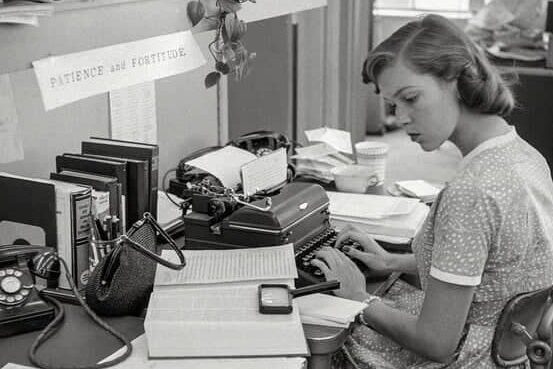
And so, as we look at all these reasons, the core truth emerges: the revival isn’t truly about the machine itself, but about a massive cultural hunger for a different pace of life. Looking back to the 60s, it is clear that typing on a typewriter is an invitation to slow down, to engage more fully with your own thoughts, and to value quality over sheer quantity. It forces a depth of connection to your work that the instant, fractured nature of digital life often steals away. For Gen Z, this slow creativity, this commitment to intentionality and focus, is the real, profound reason they are bringing the beloved click-clack back. It’s a quiet revolution against distraction, proving that sometimes, the oldest tools are the ones that feel the most revolutionary.
In the end, it seems the typewriter isn’t just a nostalgic echo from the past, it’s a powerful symbol for the future. It stands for focus, authenticity, and a refusal to be constantly distracted. The click-clack is a delightful, rhythmic reminder that our best creative work happens when we slow down and commit to the beautiful, tangible process of creation.
Bonus: Typewriters to buy in 2025
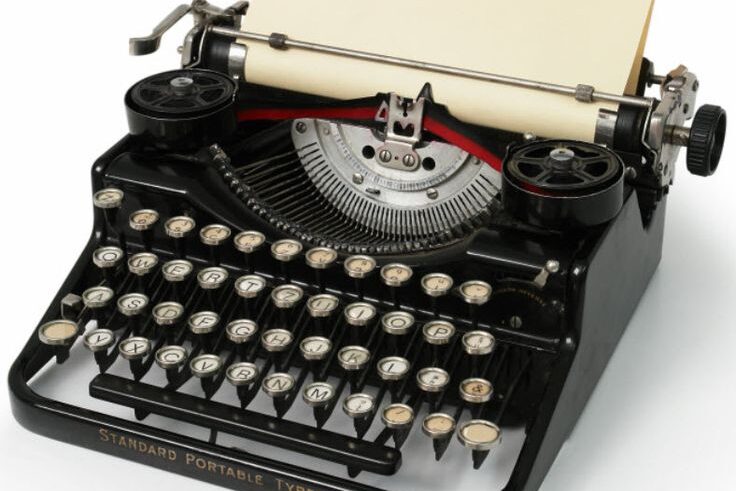
This guide will help you select the perfect starter model and know exactly where to look for an authentic, reliable piece of writing history.
Royal Quiet DeLuxe (1940s–50s)
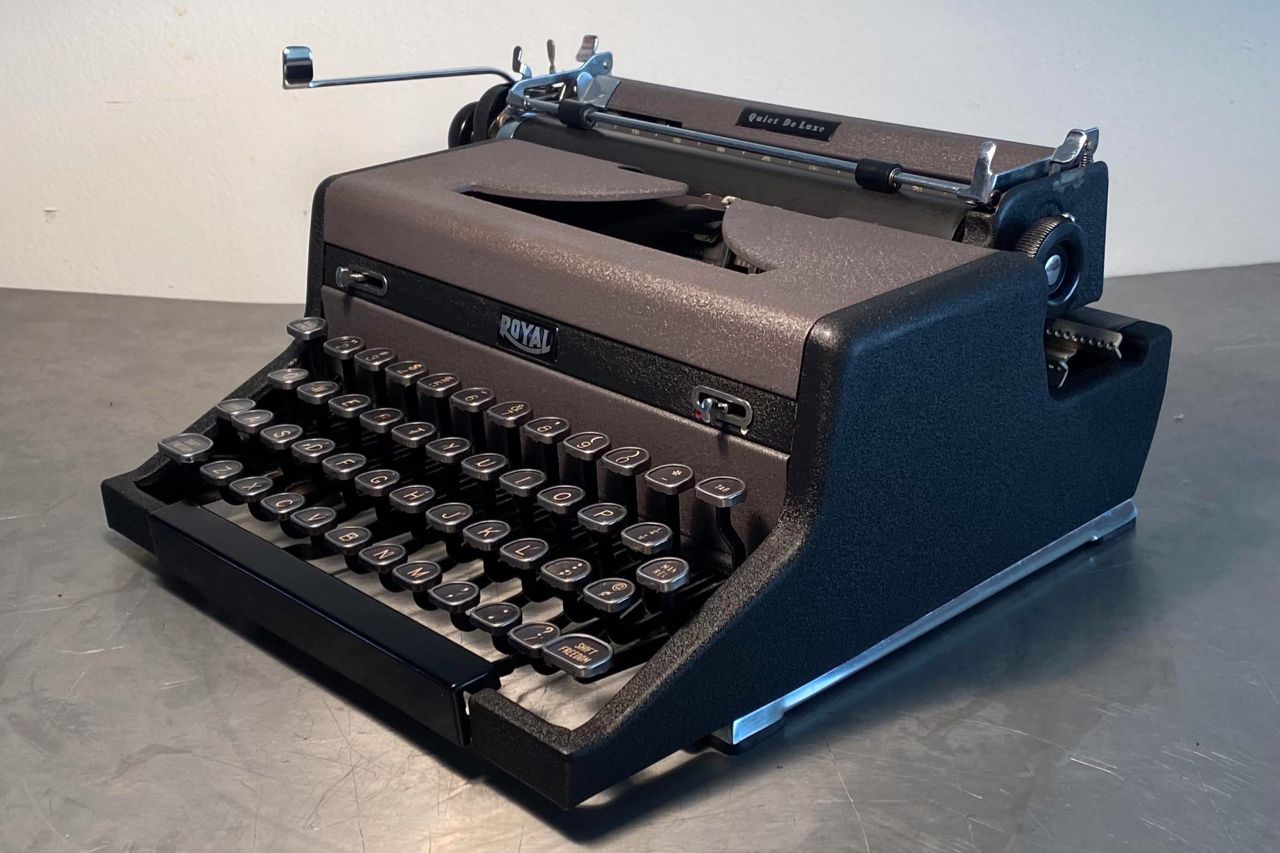
This is the quintessential mid-century American machine, famously used by writers like Ernest Hemingway, and it makes for an exceptional first typewriter. The Quiet DeLuxe is celebrated for its reliable mechanics and incredibly satisfying, smooth touch, it’s heavy enough to stay put on a desk but portable enough to take to a coffee shop. When searching for one, look for models in the $150–$300 range that have been professionally cleaned and have a new ribbon installed. Experts and restorers often recommend this line for beginners because of its forgiving nature and readily available parts. Its classic, rounded lines and iconic design also ensure it looks absolutely magnificent on any desk, perfectly combining aesthetics with rock-solid functionality for your first steps into analog writing.
Smith-Corona Galaxie (1960s)
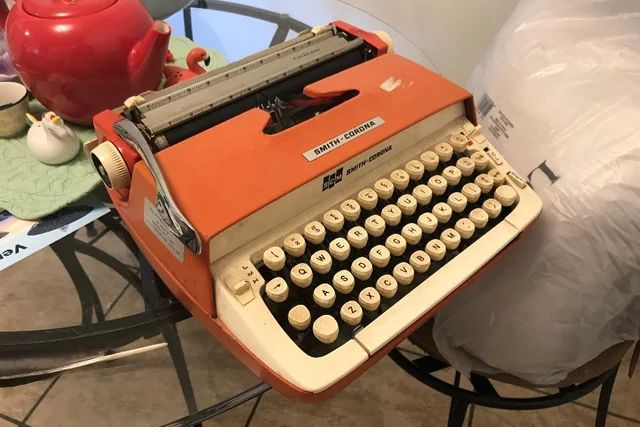
If you want a machine that’s common, beloved, and known for its fantastic portability and ease of use, the Smith-Corona Galaxie (or any of its close siblings like the Silent or Sterling) is a phenomenal choice. These machines defined the mid-century office and home and are often considered some of the most practical typewriters ever made. Their key action is light and fast, making them excellent for writers coming from a laptop keyboard. You can usually find a well-restored Galaxie for a budget-friendly $80–$200, making it an accessible entry point into the hobby. Seek out a model with its original carrying case, which is often cleverly integrated into the design, providing the perfect protection for when you decide to take your writing session completely offline.
Olivetti Lettera 32 (1960s)
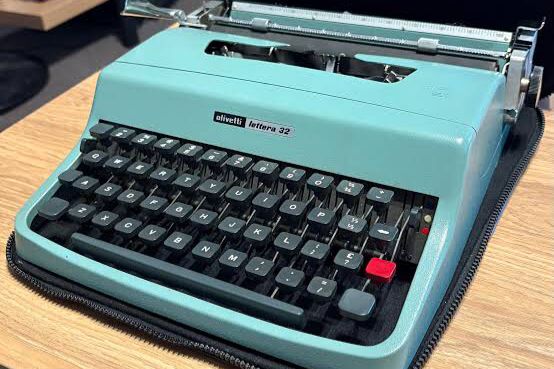
For the aspiring author or minimalist who values sleek design and true portability, the Olivetti Lettera 32 is a global icon. Designed by Marcello Nizzoli, its minimalist, angular aesthetic is pure Italian genius. It was the chosen workhorse of serious writers, including the Nobel laureate Cormac McCarthy, for its compact size and highly responsive key action. Because of its legendary status and continued demand, a truly pristine, working model will generally fall between $200 and $400. While its smaller size means it’s ultra-portable, its keys are perfectly spaced for comfort. The Lettera 32 is a typewriter that is as much a collector’s piece as it is a fantastic daily writing tool, perfectly balancing function with high-end, classic design.
IBM Selectric (1961 onward)
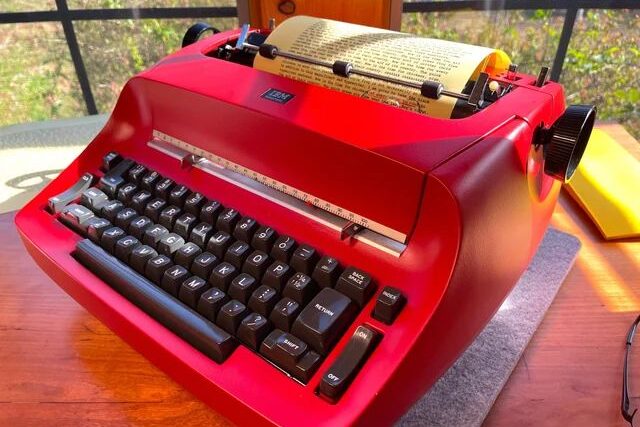
Stepping into the world of electric typewriters, the IBM Selectric is a fascinating, powerful beast that offers a totally different experience. Nicknamed the “golf ball” typewriter due to its signature interchangeable type head, the Selectric is the machine that truly bridged the gap between manual typewriters and word processors. It’s an electric machine, meaning you plug it in, but it still delivers that deep, mechanical satisfaction with an incredibly crisp, fast typing experience. These are heavier and more complex, and a fully reconditioned model can fetch $300 to $700. Repair experts often caution that they are harder to fix than manuals, but the unique feel of the typing and the iconic, industrial look make it a highly desirable machine for those who want power without the fuss of a digital screen.
Retrospekt Restored Models
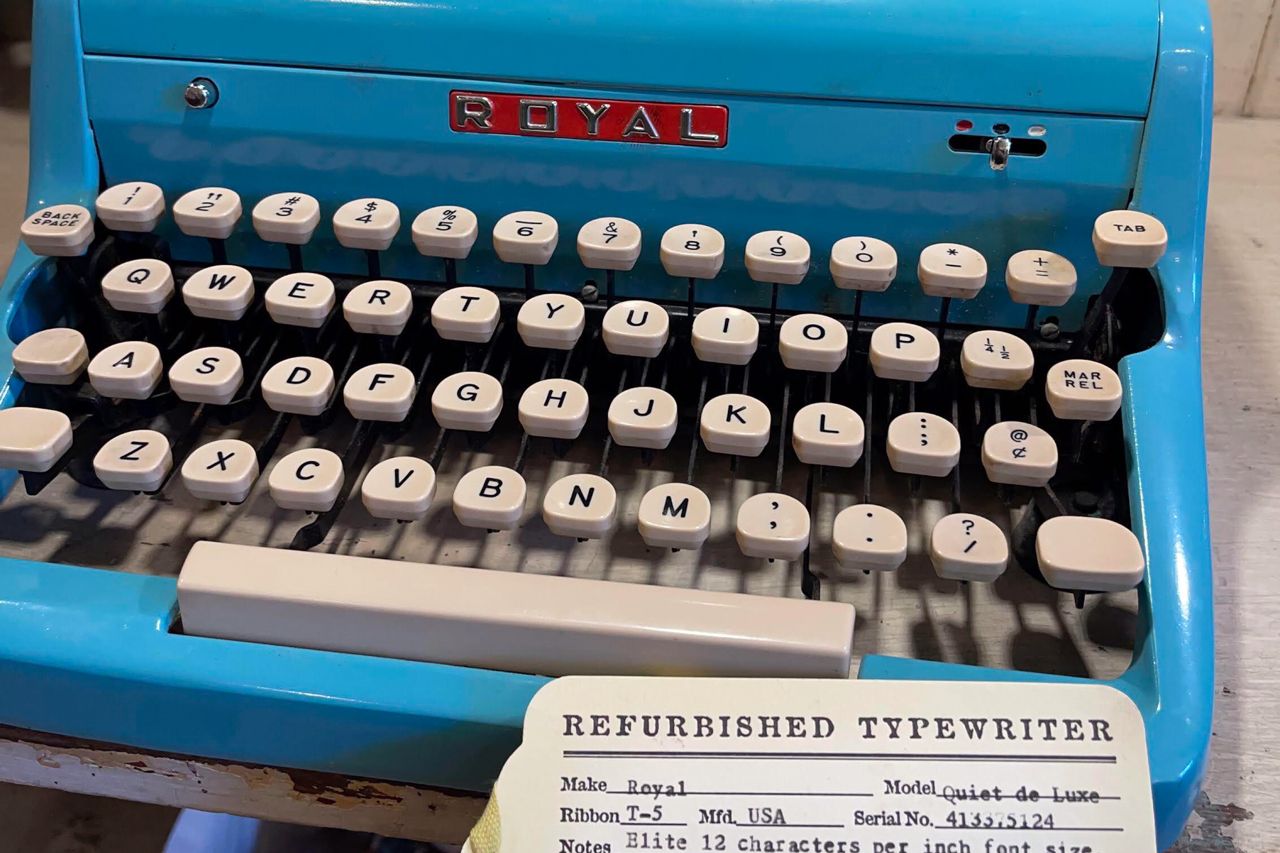
If the idea of hunting through flea markets or trusting an unknown eBay seller gives you pause, several modern companies specialize in professionally restoring vintage machines and offering warranties. Retrospekt is one such example that is highly visible online, alongside dozens of smaller, dedicated local repair shops that are thriving on platforms like Etsy and through direct websites. These services take the guesswork out of your purchase, delivering a thoroughly cleaned, serviced, and guaranteed working typewriter right to your door, often with custom paint jobs or unique finishes. Expect to pay a premium for this guarantee of quality, with prices generally ranging from $300 to $600. This is an ideal route for first-time buyers who prioritize reliability and want a machine that works perfectly right out of the box.
This story 13 Reasons Typewriters Are Making a Comeback (Yes, Really) was first published on Daily FETCH


